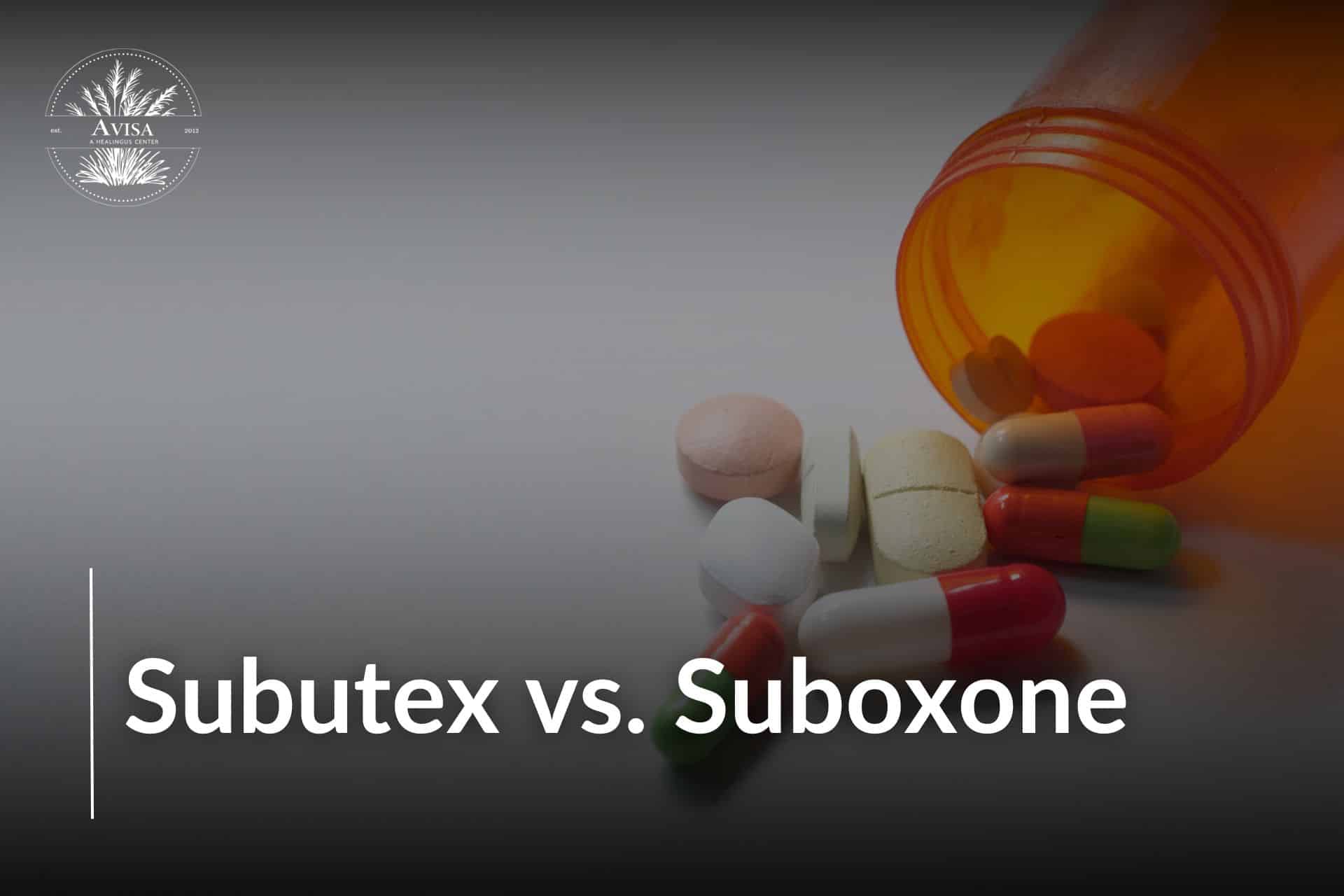Subutex vs Suboxone, both consist of buprenorphine, a medication that can help people overcome opioid addiction by underestimating withdrawal symptoms and soothing cravings. Both Subutex and Suboxone are consumed once a day and can be either given by a healthcare professional or taken home for usual use.
Buprenorphine was first authorized by the Food and Drug Administration to treat opioid dependence in 2002. Before buprenorphine, methadone was the only drug known for treating opioid use disorders. Buprenorphine was different from methadone in that it could be specified in a doctor’s office and did not have to be nursed from a specialty clinic.
Buprenorphine is a partial opioid agonist and works to treat dependence on opioids by partially evoking the same receptors as drugs like heroin and prescription narcotics. In this way, buprenorphine contains the onset of withdrawal symptoms and lessens the cravings for drugs. It’s these cravings that cause many people to retreat.
Let’s explore more about Subutex vs Suboxone and understand the difference in opioid dependence in this article.
What is Subutex?
Subutex is a medication used for treating opioid addiction, composed exclusively of buprenorphine.
Buprenorphine as the Active Ingredients
Buprenorphine is a partial opioid agonist that binds to opioid receptors in the brain, reducing withdrawal symptoms and cravings with a lower risk of misuse.
Mechanism of Action
Buprenorphine activates opioid receptors to a lesser extent than full agonists, alleviating withdrawal symptoms and reducing cravings without producing a strong high. Its “ceiling effect” limits the risk of overdose.
Uses in Opioid Dependence Treatment
Subutex is used in medication-assisted treatment (MAT) programs, particularly during the induction phase to manage withdrawal and stabilize patients and in the maintenance phase for long-term recovery.
Benefits and Potential Side Effects
Benefits
- Reduces cravings and withdrawal symptoms.
- Lower risk of misuse compared to full opioid agonists.
- Accessible via prescription in a doctor’s office.
Side Effects
- Common: Headache, nausea, sweating, constipation, insomnia.
- Serious: Respiratory depression, liver problems, allergic reactions.
- The risk of dependence, though lower than with full agonists
Subutex, with buprenorphine as its active ingredient, is essential in opioid dependence treatment, offering a safer alternative to full opioid agonists by mitigating withdrawal symptoms and craving with a lower misuse risk.
What is Suboxone?
Suboxone is a drug that helps treat opioid addiction. It has two important constituents: buprenorphine and naloxone.
Active Ingredients
- Buprenorphine: Partial opioid agonist which reduces withdrawal symptoms and cravings.
- Naloxone: Opioid antagonist that causes withdrawal if injected to discourage misuse.
Mechanism of Action
- Buprenorphine: Binds to the opioid receptors, reducing the withdrawal and cravings with a low risk of overdosage.
- Naloxone: If misused, it blocks opioids discouraging abuse.
Uses in Opioid Dependence Treatment Suboxone is indicated as an adjunct to medical treatment for opioid dependence in adults and adolescent patients aged 16 years and above who have agreed to be treated for substance abuse problems through medication-assisted therapies (MAT).
Benefits and Potential Side Effects
Benefits
- Effective at reducing withdrawal symptoms and cravings.
- Lower potential for misuse because of naloxone inclusion.
- It can be prescribed by doctors in their offices easily accessible.
Potential Side Effects
- Common: Headache, nausea, constipation, insomnia.
- Serious: Respiratory depression, liver problems, allergic reactions.
- Dependence: Lower than full agonists, but still there is dependence.
Suboxone is an important medication because it provides efficacy with protection against misuse in managing opioid dependence.
Differences Between Subutex and Suboxone
The significance of Subutex vs Suboxone in treating opioid dependence is comparable. There is one essential consideration when selecting between the two medications, Subutex vs Suboxone. Pregnant women registered in a MAT program should use Subutex, as the naloxone present in Suboxone is potentially toxic to their babies.
Composition and Ingredients, Subutex vs Suboxone
- Subutex: Buprenorphine is the only constituent of Subutex.
- Suboxone: It consists of naloxone as well as buprenorphine.
Mechanisms of Action, Subutex vs Suboxone
- Subutex: The drug works as a partial opioid agonist decreasing withdrawal symptoms and desire for drugs.
- Suboxone: Buprenorphine is combined with naloxone, a pure opioid antagonist that deters misuse by precipitating withdrawal if injected.
Role of Naloxone in Suboxone
- However, when taken in the prescribed manner it has very little effect but prevents abuse through injecting Suboxone.
Prescribing Practices and Availability
- Subutex: Often used initially or for pregnant patients; preferred for those who react to naloxone.
- Suboxone: Commonly used for long-term maintenance due to its abuse-deterrent properties.
Potential for Misuse and Abuse
- Subutex: Higher misuse potential as it lacks naloxone.
- Suboxone: Lower misuse potential due to naloxone’s deterrent effect.
Anyone believing MAT must first be assessed by a direct care physician or addiction psychiatrist who is licensed to prescribe medication-assisted treatment medications. Subutex vs Suboxone are both useful medications that can be utilized as part of a total treatment plan for opioid addiction.
Side Effects and Risks
Whenever opioid-type medications are operated to treat opioid dependency, there is a question of whether or not the medication can or will be misused. Suboxone, because it contains naloxone, is negligibly more susceptible to abuse than Subutex. This does not mean that someone consuming Subutex to overcome addiction will necessarily abuse it, but there is a more risk.
- Common side effects: Drowsiness, headache, nausea, and constipation.
- Serious side effects: Respiratory depression, liver damage, and severe allergic reactions.
Side Effects of Suboxone
- Common side effects: Headache, nausea, sweating, and mouth numbness.
- Serious side effects: Respiratory issues, liver problems, and severe allergic reactions.
Risk of Dependency and Withdrawal Symptoms
- Both Subutex and Suboxone can lead to dependency if not taken as prescribed.
- Withdrawal symptoms may include anxiety, muscle pain, insomnia, and flu-like symptoms.
- Proper medical supervision is crucial to managing dependency and tapering off the medication.
Special Considerations for Pregnant Women and Other Specific Populations
- Pregnant women: Subutex is often preferred as it lacks naloxone, reducing potential risks to the fetus.
- Other populations: Individuals with liver conditions, respiratory issues, or a history of substance abuse should use these medications under close medical supervision.
Proper use and medical oversight are essential to minimize risks and manage side effects effectively.
Conclusion
Subutex vs Suboxone, are crucial tools in the battle against opioid dependence, offering effective options for reducing withdrawal symptoms and cravings. While both medications contain buprenorphine, the inclusion of naloxone in Suboxone provides an additional safeguard against misuse. This difference is significant when prescribing to specific populations, such as pregnant women, where Subutex is preferred to avoid potential harm from naloxone.
If you or someone you know is struggling with opioid addiction, don’t wait to seek help. Consult with Avisa to explore to know Subutex vs. Suboxone, which is the right choice for your treatment plan. Taking this step can significantly enhance your recovery journey and lead to a healthier, addiction-free life.
Contact Avisa today to begin your path to recovery.
FAQs
Que: Why has Subutex been discontinued?
Ans: Subutex was discontinued in the United States in 2011 after conceiving new formulations that were negligibly likely to be abused.
Que: Why Subutex instead of methadone?
Ans: Methadone has more of a possibility for abuse on its own than Subutex. There is a big consideration with the use of methadone therapy that people are substituting the abuse of one opioid with another. There is a danger of overdose with methadone, but the risk of overdose with Subutex is not more.
Que: What are the two types of Suboxone?
Ans: Suboxone is consumed orally. It comes in three types designed to be easy to take: Sublingual tablets and Sublingual film strips.
Que: Does Subutex come in strips?
Ans: While Subutex is secure for an unborn child, Subutex can be abused and can even be abused alongside drugs. Most pregnant women will be prescribed Subutex if the treating provider is aware of the pregnancy..
Que: What is the new name for Subutex?
Ans: Buprenorphine is provided under the trade names Cizdol, Brixadi, Suboxone, Subutex, Zubsolv, Bunavail, Buvidal, Sublocade










